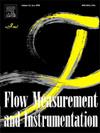A lightweight optical flow model for particle image velocimetry
IF 2.3
3区 工程技术
Q2 ENGINEERING, MECHANICAL
引用次数: 0
Abstract
Particle Image Velocimetry (PIV) is a reliable non-contact velocimetry technique in fluid visualization, in which the method incorporating deep neural networks outperforms the mainstream conventional algorithms in terms of reconstruction accuracy and computation time. However, some optical flow models suffer from large parameter quantities and high complexity. This paper proposes a lightweight network, which combines blueprint convolution and attention mechanism based on the improved LiteFlowNet3 with supervised learning. The network uses blueprint convolution instead of ordinary convolution to compress the number of model parameters. An attention mechanism is introduced to enhance the extraction of particle image features and improve the accuracy of flow inference. It aims to reduce the number of model parameters and computational complexity while maintaining model accuracy. The experimental results show that the improved lightweight model reduces the average endpoint error by 37.71 % compared to the pre-improved model. Finally, a 2D PIV experimental system was constructed to capture particle image pairs. By applying this model to reconstruct the velocity field, the experimental results proved its feasibility and adaptability in processing real-world images.
求助全文
约1分钟内获得全文
求助全文
来源期刊

Flow Measurement and Instrumentation
工程技术-工程:机械
CiteScore
4.30
自引率
13.60%
发文量
123
审稿时长
6 months
期刊介绍:
Flow Measurement and Instrumentation is dedicated to disseminating the latest research results on all aspects of flow measurement, in both closed conduits and open channels. The design of flow measurement systems involves a wide variety of multidisciplinary activities including modelling the flow sensor, the fluid flow and the sensor/fluid interactions through the use of computation techniques; the development of advanced transducer systems and their associated signal processing and the laboratory and field assessment of the overall system under ideal and disturbed conditions.
FMI is the essential forum for critical information exchange, and contributions are particularly encouraged in the following areas of interest:
Modelling: the application of mathematical and computational modelling to the interaction of fluid dynamics with flowmeters, including flowmeter behaviour, improved flowmeter design and installation problems. Application of CAD/CAE techniques to flowmeter modelling are eligible.
Design and development: the detailed design of the flowmeter head and/or signal processing aspects of novel flowmeters. Emphasis is given to papers identifying new sensor configurations, multisensor flow measurement systems, non-intrusive flow metering techniques and the application of microelectronic techniques in smart or intelligent systems.
Calibration techniques: including descriptions of new or existing calibration facilities and techniques, calibration data from different flowmeter types, and calibration intercomparison data from different laboratories.
Installation effect data: dealing with the effects of non-ideal flow conditions on flowmeters. Papers combining a theoretical understanding of flowmeter behaviour with experimental work are particularly welcome.
 求助内容:
求助内容: 应助结果提醒方式:
应助结果提醒方式:


